
In late 2018, officials in the city of Walla Walla, Wash. (population 32,000) issued a report that showed the economics of the city’s single-stream curbside recycling program turned upside down over the course of 18 months.
As the graph below indicates, the city went from earning up to $30 per ton for recyclables in early 2017 to paying as much as $100 per ton a year later. Over the course of 2018, the city’s program lost a total of $130,000.
Walla Walla, which attributed the financial flip primarily to China’s National Sword import policy, has instituted a monthly recycling surcharge on resident bills to help get the program back on solid financial footing. The city’s program collects standard fiber items and plastics Nos. 1 and 2. It does not accept glass.
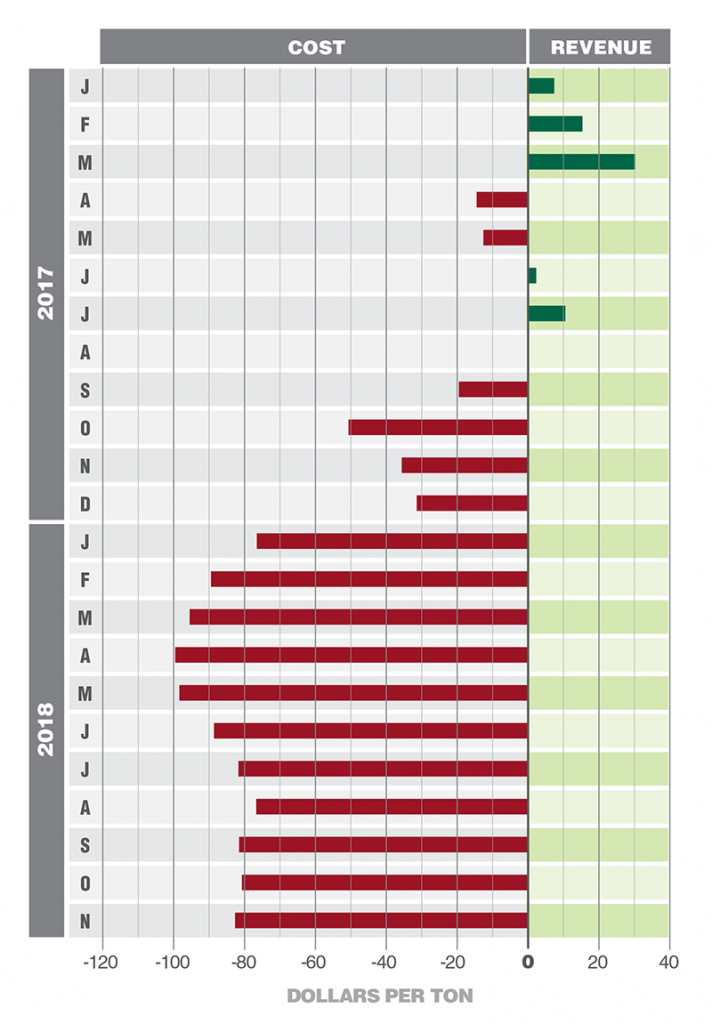
Data source: City of Walla Walla, Wash.
This article originally appeared in the February 2019 issue of Resource Recycling. Subscribe today for access to all print content.
RRS analyzed data from field reports and primary sources as well as experiential data from MRF practices across the U.S.
The findings show that with additional stages of advanced cleaning, glass recovery can yield increases in quantity, as well as tip fee savings and avoided emissions.
In the graphic below, typical MRF glass processing steps are shown in the “Average Performance” column, and more advanced undertakings are shown to the right. At the bottom, we’ve quantified the benefits of utilizing best practices.
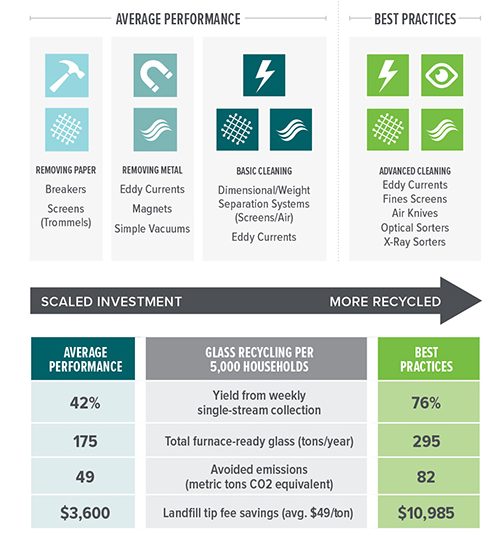
Data Corner is compiled monthly by recycling consultancy RRS.
This article originally appeared in the March 2017 issue of Resource Recycling. Subscribe today for access to all print content.
The U.S. experienced a rapid surge in its recycling rate as capacity increased with the growth of curbside recycling programs and construction of materials recovery facilities in the late 1980s to mid-1990s.
However, the last several years have seen the increases in recycling rate level off and stagnate in a development that parallels recent commodity pricing.
While rising commodity prices will to some degree help drive increased recycling, the trends underscore the need to overcome barriers in areas such as access and resident participation.
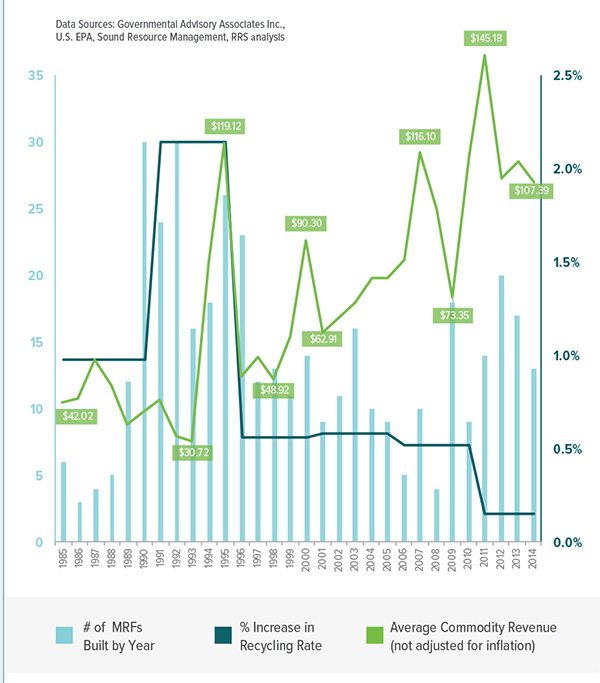
Note: Commodity revenue numbers represent average prices for typical curbside recyclables receiving by processing facilities in the Pacific Northwest.
Data Corner is compiled monthly by recycling consultancy RRS. Visit recycle.com to learn more.
This article originally appeared in the May 2017 issue of Resource Recycling. Subscribe today for access to all print content.
Cascadia Consulting Group compiled single-family recycling composition data utilizing studies conducted in the past three years in five western and southern U.S. cities.
The five municipalities all operate single-stream recycling collection and have populations ranging from 600,000 to 2.2 million. The chart below provides a breakout of types and amounts of contaminants, defined as materials not accepted in the programs.
Although contamination rates ranged widely – from 12 to 32 percent – researchers found consistency in terms of material types: non-conforming paper; food, green waste and wood; and other non-recyclables.
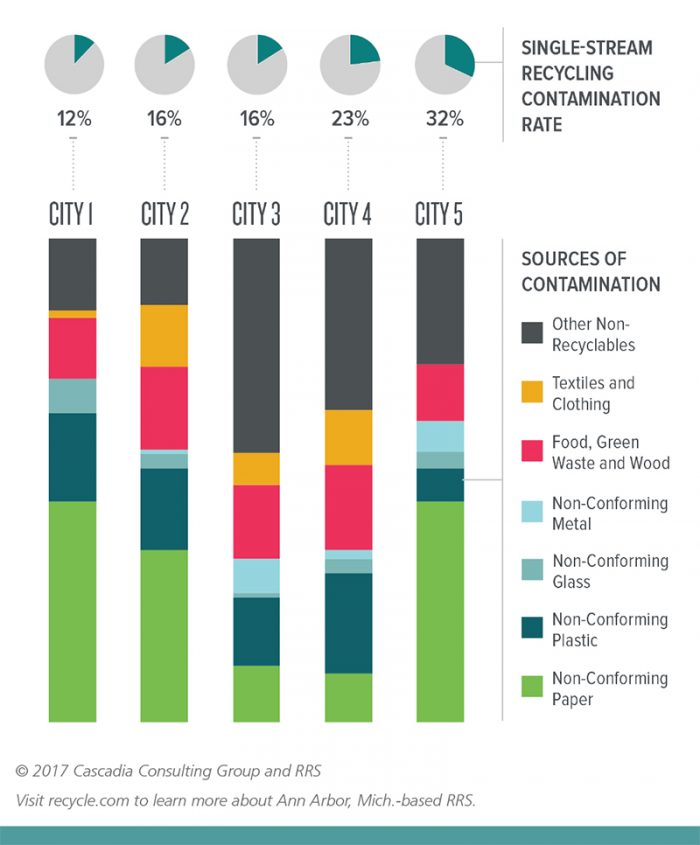
Data Corner is compiled monthly by recycling consultancy RRS. For this edition, the company collaborated with Cascadia Consulting.
This article originally appeared in the June 2017 issue of Resource Recycling. Subscribe today for access to all print content.
As educational leaders take their much-deserved summer breather, they might finally have some time to consider how to bolster materials recovery in schools.
The cafeteria could be a great place to start. Resources are available to help schools set up or enhance their recycling/composting programs to recover food waste and recyclables, including some often-overlooked materials like cartons and foam trays.
Schools can play a sustainable role in the community while teaching the students about responsible living – a lesson that can then transfer back into their homes.
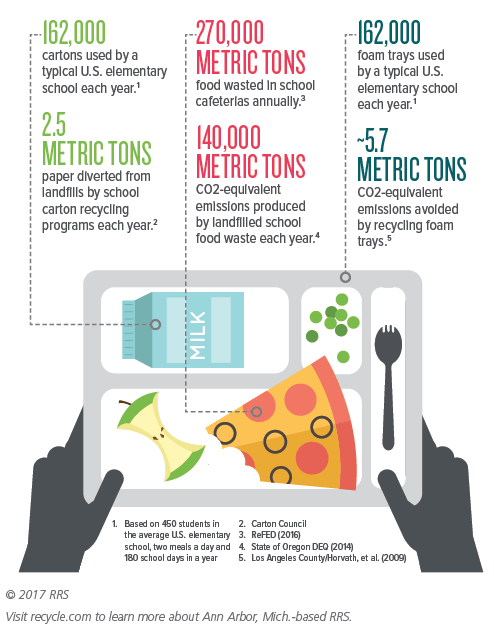
Data Corner is compiled monthly by recycling consultancy RRS.
This article originally appeared in the July 2017 issue of Resource Recycling. Subscribe today for access to all print content.
RRS analyzed commodity pricing from several published reports to compare U.S. and European pricing data for recycled fiber and glass.
Although making a precise comparison is challenging due to differences in traded grades and local composition, the findings nonetheless highlight divergences in pricing between the two jurisdictions.
The differences can likely be attributed to the large source-separated collection footprint in Europe, which delivers quality glass and fiber to the market.
This is supported by the fact that materials recovery facilities (MRFs) in Europe see similar pricing to U.S. MRFs on glass collected in single-stream systems, due to the need for secondary cleaning and sorting.
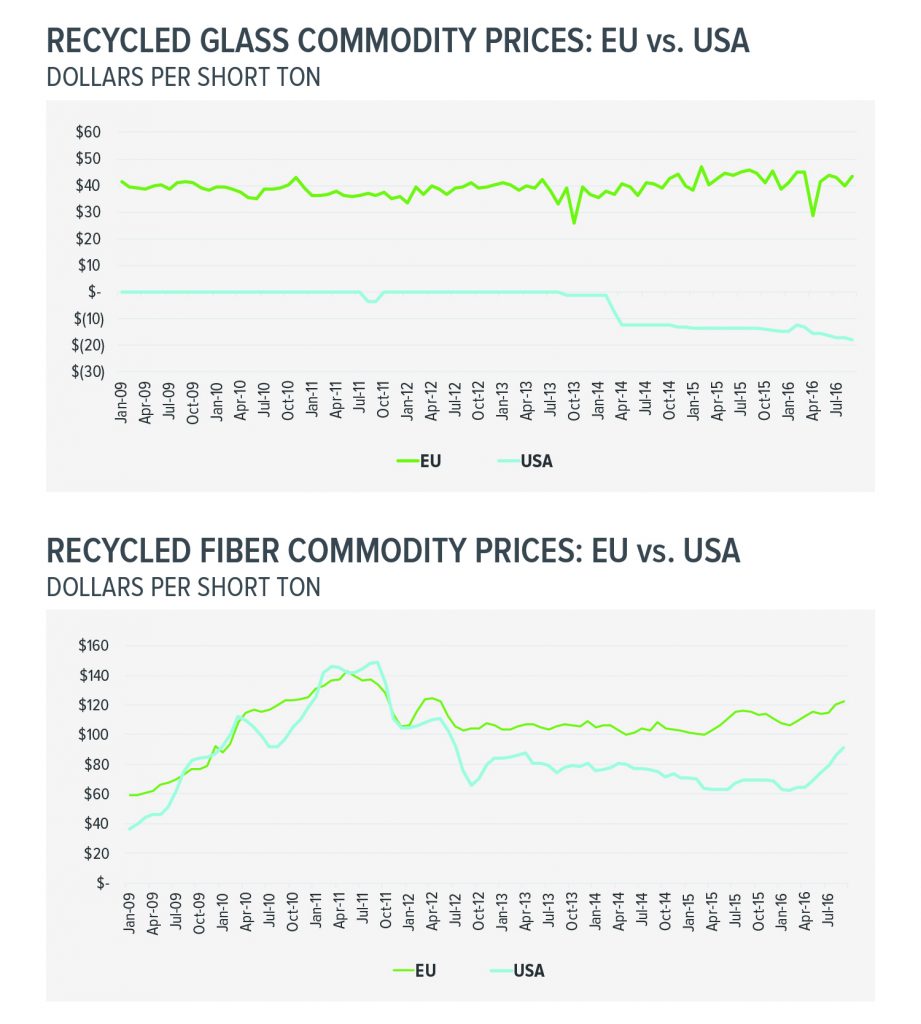
Data Corner is compiled monthly by recycling consultancy RRS.
This article originally appeared in the August 2017 issue of Resource Recycling. Subscribe today for access to all print content.
RRS compiled a sampling of nationwide data from Governmental Advisory Associates and U.S. EPA sources to show current average materials recovery facility (MRF) efficiency rates and community recycling rates based on MRF construction year.
Efficiency rates show the percentage of materials, by weight, that enter the MRF and are not discarded as residue.
Newer MRFs open the door for single-stream programs in which people throw all recyclables in one bin – this improves participation and boosts tonnages but affects sorting efficiency, resulting in more residuals.
The tradeoff is positive overall as long as the increase in recycling outweighs the decrease in efficiency. Developments in MRF technology to reflect the mix of materials in the stream can help to capture more, and education is essential to minimize contamination.
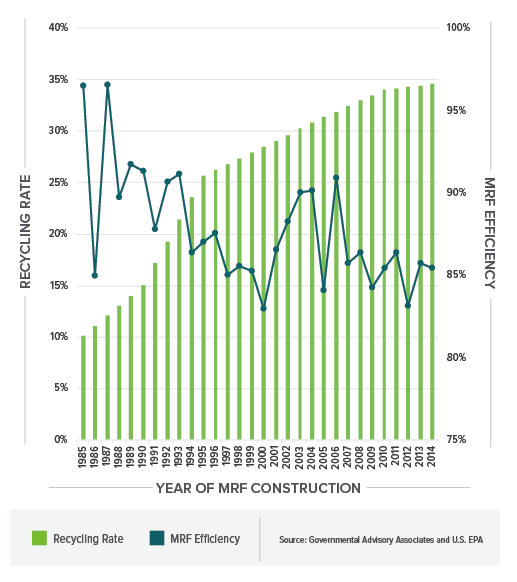
Data Corner is compiled monthly by recycling consultancy RRS.
This article originally appeared in the September 2017 issue of Resource Recycling. Subscribe today for access to all print content.
The word cloud below represents the language utilized in 1,000 residential recycling program guidelines, as reviewed by RRS.
The size of each word is proportional to its frequency of use in program education/outreach materials.
RRS also categorized the top 100 words and found that 55 percent of those terms described an item (for example, box, bottle or container); 24 percent described materials (steel, glass, plastic, etc.); and 18 percent aimed to direct behavior (place, empty, remove, etc.).
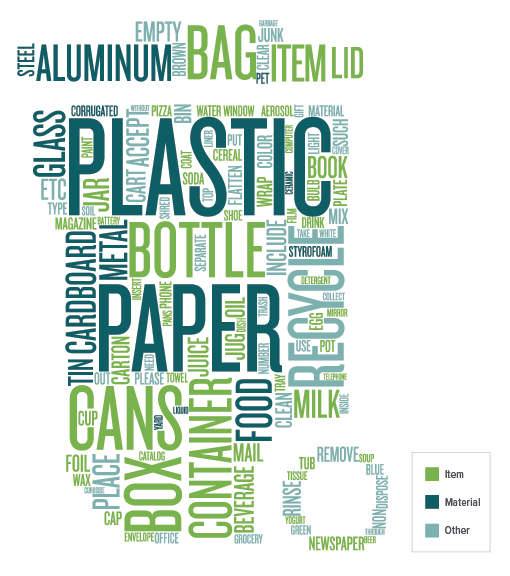
Data Corner is compiled monthly by recycling consultancy RRS.
This article originally appeared in the October 2017 issue of Resource Recycling. Subscribe today for access to all print content.
